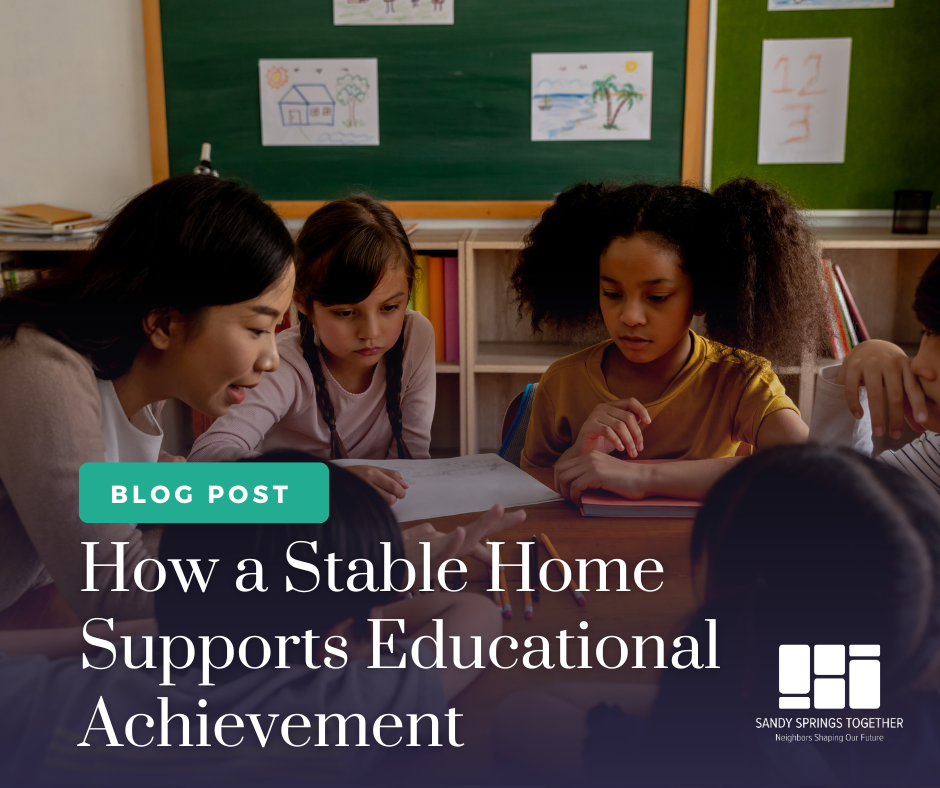
Imagine a classroom full of excited young learners, energized, engaged and happy. Imagine a teacher who is also energized and engaged and able to complete their semester’s lesson plans on time with all students showing an improvement from the beginning of the school year.
This is the goal of every educator; it contributes to the success of the school to the stability of the family and to the vitality of the community.
Every child deserves the chance to learn and grow in a steady environment, yet housing insecurity often stands in the way. In Sandy Springs public schools 30% of our students don’t finish the school year in the same public school they started the school year. When families face uncertain living situations—like frequent moves or the threat of eviction—young learners can struggle to keep up with schoolwork. Children who don’t know where they will be sleeping each night are far more likely to miss classes, lose focus on their studies and feel isolated and insecure. By recognizing the close connection between safe, affordable housing and academic success, we can ensure that students have the foundations they need to thrive in the classroom; and that environment contributes to the vitality of our community.
Unfortunately, high rents, minor family budget shortfalls, sudden unexpected expenses, and limited affordable units, can keep families in a cycle of upheaval. When cities don’t invest in long-term affordable housing solutions, many parents have to move repeatedly, making it harder for young people to stay engaged or develop strong relationships with teachers and classmates. This cycle not only burdens students but also places extra strain on schools trying to support ever-shifting enrollments.
To change these patterns, Sandy Springs’ nonprofits like Community Assistance Center offer assistance with their Eviction Prevention Programs, their emergency financial aid or mediation, help families remain in their homes. This stability keeps students in the same classrooms, allowing them to maintain friendships and avoid learning gaps.
But this is just a temporary fix. Our city needs to increase access to a variety of housing options, fostering long-term housing stability that is attainable for all income levels.
In the long run, incentives for affordable developments and flexible zoning can make rent costs more manageable, starter homes a reality and missing middle homes more available. When schools, housing advocates, and elected officials work together, children can focus on learning rather than worrying about where they will sleep.
In the end, stable housing is the key to successful students, high public school enrollment rates and long-term employment for our teachers and a vital community,
By providing stable housing options, encouraging attendance and easing stress, affordable homes help children reach their full potential. Each member of the Sandy Springs Community has a role to play, from leaders who shape housing laws to neighbors who offer support. If we commit to solutions that put families first, we not only uplift students but also strengthen our schools and our community. The future of education depends on the security of the places children call home.


